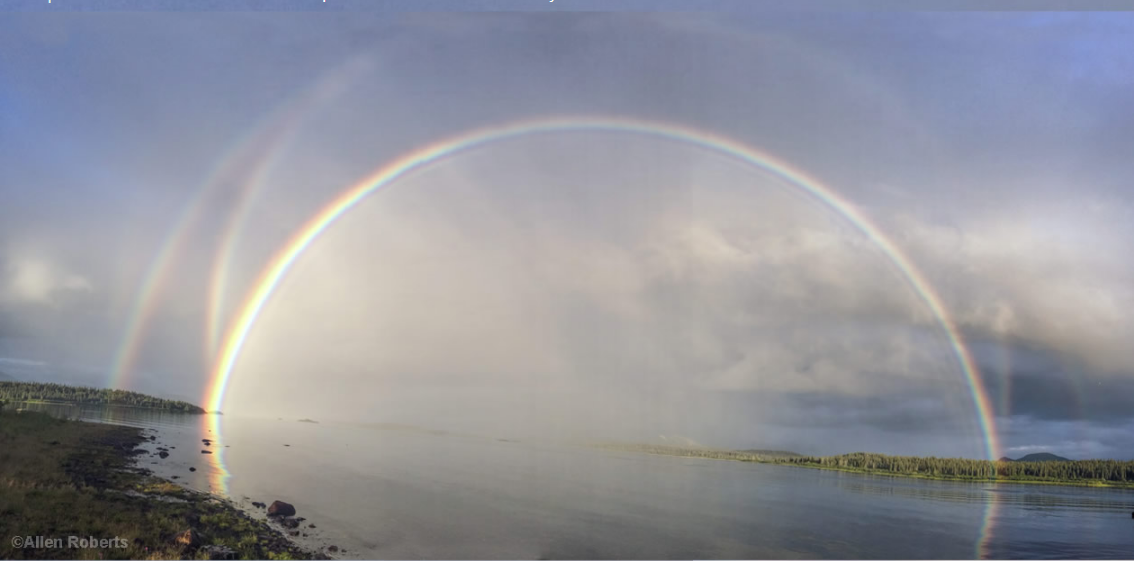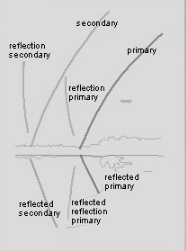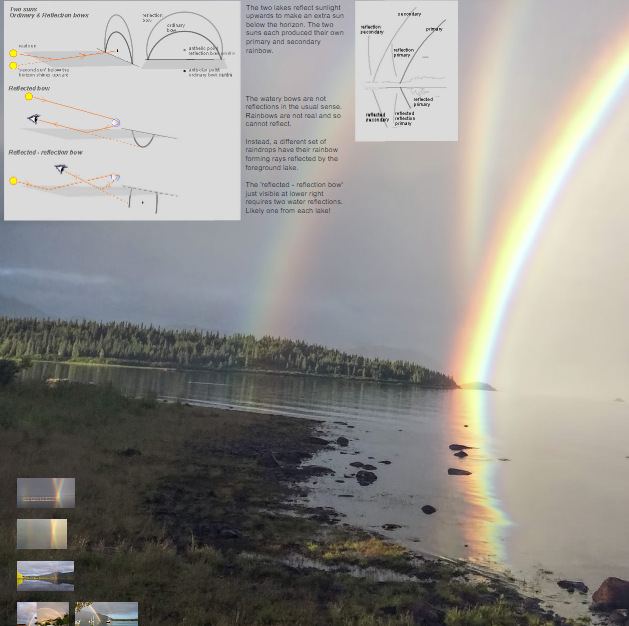Alaskan Multiple Rainbows - OPOD
Alaskan Multiple Rainbows - Exploring the Phenomenon
When it comes to the enchanting world of atmospheric optics, there are few sights as mesmerizing as multiple rainbows. One such captivating display was captured by Allen Roberts at Tikchik Lodge, located approximately 300 miles west of Anchorage, Alaska. The scene unfolded around 10 in the evening, revealing a stunning array of seven or more rainbows. What makes this sighting particularly remarkable is the unique role played by two nearby lakes, resulting in an intricate interplay of light and reflection.
The presence of the two lakes surrounding Allen Roberts' vantage point is crucial in the formation of these multiple rainbows. While the lake behind the camera reflects sunlight upwards, aided by the foreground lake, an additional sun-like image materializes below the horizon. Each of these two suns generates its own set of primary and secondary rainbows, contributing to the rich tapestry of colors overhead.
It's important to note that the watery bows seen in the image are not conventional reflections. Rainbows, being optical phenomena, cannot reflect in the traditional sense. Instead, what we witness is a fascinating interplay between light rays and water droplets. The foreground lake acts as a reflective surface, causing the rainbow-forming rays from a distinct set of raindrops to bounce back and create an array of rainbows within the water itself.
Within this captivating scene, one can even observe a subtle "reflected-reflection bow" towards the lower right. This particular bow requires two separate water reflections to manifest. It is likely that each lake contributes to this phenomenon, enhancing the complexity and beauty of the overall display.
The allure of multiple rainbows lies not only in their visual splendor but also in the scientific principles they illuminate. These captivating optical displays serve as a reminder of the intricate ways in which light interacts with our natural surroundings. By understanding the mechanisms behind these phenomena, we gain deeper insights into the complexities of our atmosphere and the interplay of light and water droplets.
In addition to their aesthetic appeal, multiple rainbows also provide scientists and researchers with valuable opportunities for study. By carefully examining these intricate displays, experts can gain insights into the size, shape, and distribution of water droplets in the air. This knowledge contributes to our understanding of meteorological processes and aids in the development of more accurate models for weather forecasting.
The occurrence of multiple rainbows is relatively rare, making each sighting a unique and precious experience. These extraordinary displays serve as a reminder of the diverse and wondrous phenomena that exist within our natural world. Whether it's the result of the interplay between lakes, mountains, or other atmospheric conditions, each instance of multiple rainbows offers a glimpse into the hidden complexities of our environment.
In conclusion, the Alaskan multiple rainbows captured by Allen Roberts at Tikchik Lodge showcase the mesmerizing beauty of these optical phenomena. Through the interaction of light, water droplets, and reflective surfaces, a symphony of colors emerges, creating a visual spectacle that leaves observers in awe. As we continue to explore the mysteries of atmospheric optics, such sightings serve as a testament to the intricacies and wonders that await us in the natural world.

Alaskan Multiple Rainbows - Allen Roberts captured this scene at ~10 in the evening. He was at Tikchik Lodge some 300 miles west of Anchorage. The key to the 7+ bows is Allen's location between two lakes. A lake behind the camera (with some help also from the foreground lake) reflected the sun upwards to produce two extra skywards bows. The foreground lake made 3-4 more bows in the water. iPhone image in panorama mode. ©Allen Roberts, shown with permission

The two lakes reflect sunlight upwards to make an extra sun below the horizon. The two suns each produced their own primary and secondary rainbow.

The watery bows are not reflections in the usual sense. Rainbows are not real and so cannot reflect.
Instead, a different set of raindrops have their rainbow forming rays reflected by the foreground lake.
The 'reflected - reflection bow' just visible at lower right requires two water reflections. Likely one from each lake!

Note: this article has been automatically converted from the old site and may not appear as intended. You can find the original article here.
Reference Atmospheric Optics
If you use any of the definitions, information, or data presented on Atmospheric Optics, please copy the link or reference below to properly credit us as the reference source. Thank you!
-
<a href="https://atoptics.co.uk/blog/alaskan-multiple-rainbows-opod/">Alaskan Multiple Rainbows - OPOD</a>
-
"Alaskan Multiple Rainbows - OPOD". Atmospheric Optics. Accessed on November 26, 2024. https://atoptics.co.uk/blog/alaskan-multiple-rainbows-opod/.
-
"Alaskan Multiple Rainbows - OPOD". Atmospheric Optics, https://atoptics.co.uk/blog/alaskan-multiple-rainbows-opod/. Accessed 26 November, 2024
-
Alaskan Multiple Rainbows - OPOD. Atmospheric Optics. Retrieved from https://atoptics.co.uk/blog/alaskan-multiple-rainbows-opod/.